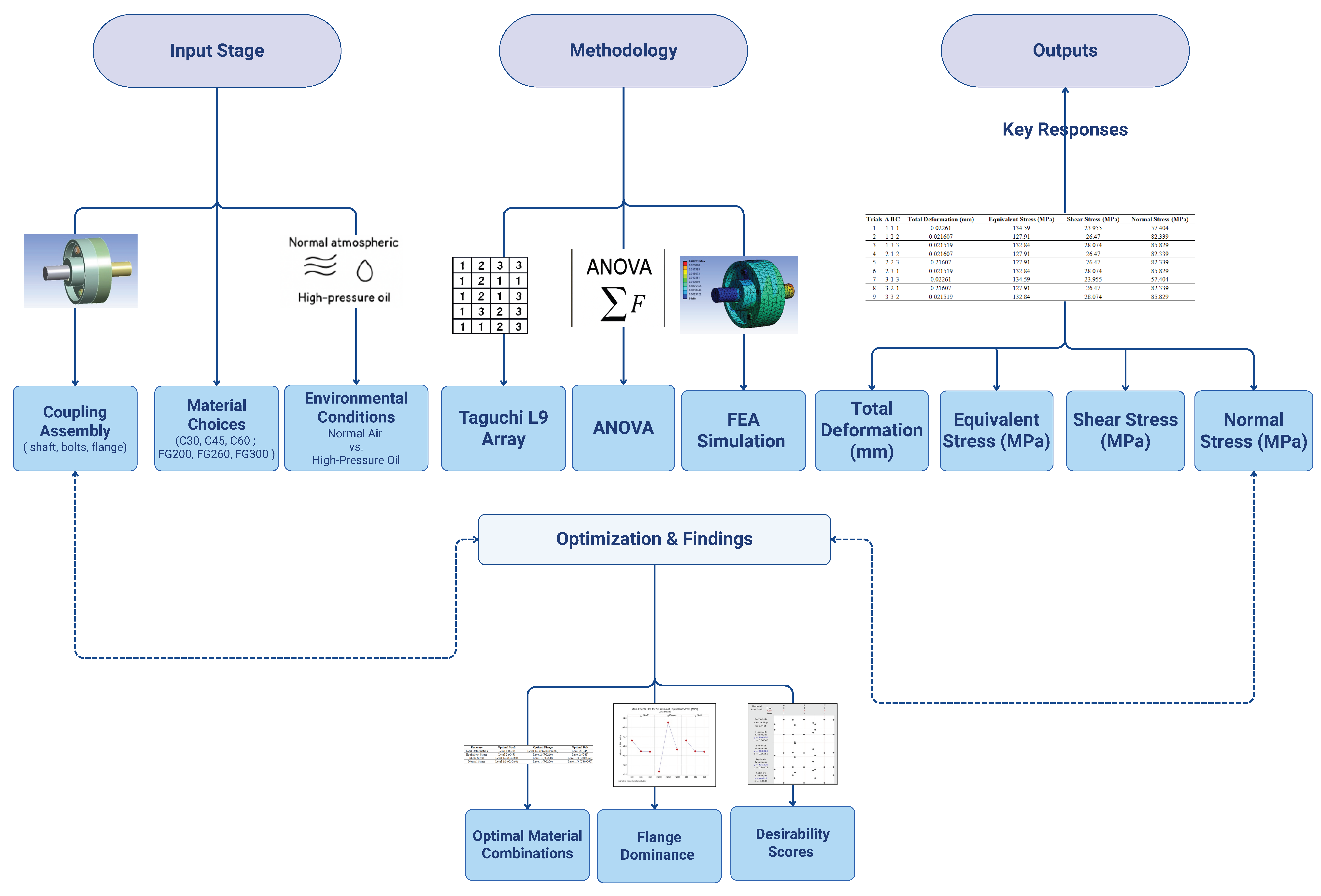Found 1 results
Open Access
Article
09 September 2025Multi-Response Optimization of Rigid Flange Coupling Using Taguchi Design, ANOVA, and FEA in Dual Environmental Conditions
This study investigates the mechanical behaviour and optimization of rigid flange couplings operating under two distinct environmental conditions: normal atmospheric air and high-pressure oil surroundings. A Taguchi L9 orthogonal array was employed to evaluate material combinations for the shaft, flange, and bolt based on four mechanical responses: total deformation, equivalent stress, shear stress, and normal stress. Analysis of variance (ANOVA) and regression modelling were used to identify significant parameters, with flange material consistently emerging as the most influential factor. Desirability analysis was conducted to determine the optimal material configurations for each environment. Under atmospheric conditions, the combination of C30 shaft, FG200 flange, and C45 bolt achieved a composite desirability of 0.6667. In high-pressure oil conditions, the optimal configuration was C45 shaft, FG260 flange, and C45 bolt, with a desirability of 0.7185. These optimal settings, not present in the original matrix, were independently validated using finite element analysis (FEA). The comparison between regression predictions and FEA results showed strong agreement, with a maximum percentage error of 6.02%, within acceptable engineering limits. This study confirms that environmental pressure significantly influences coupling performance and that material selection should be tailored accordingly. The integration of statistical optimization and simulation offers a robust framework for designing couplings in pressure-sensitive applications.
